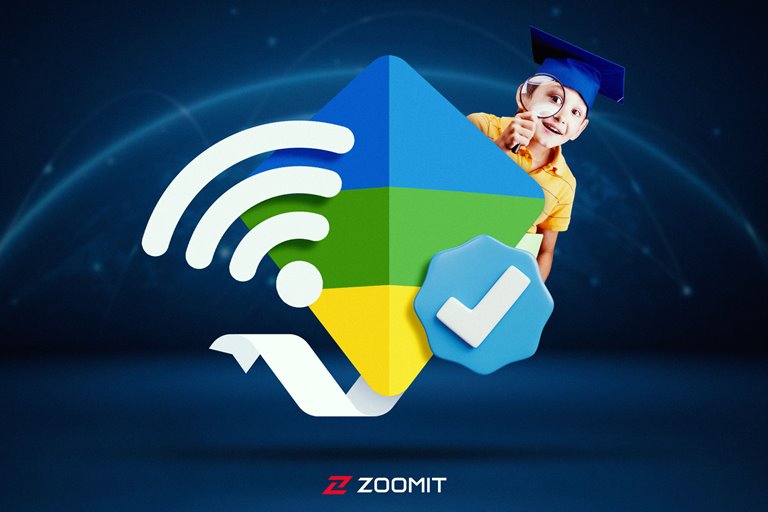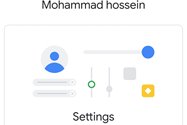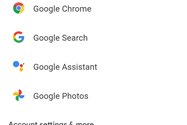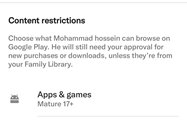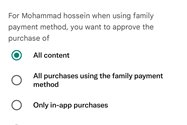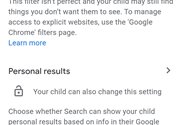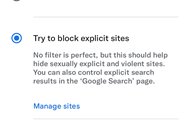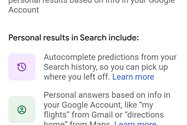What Is Google Family Link? Management And Supervision Of Children’s Activities
Google Introduces The Family Link Tool For Families To Control And Monitor How Their Children Use Their Smartphones.
In this article, we will review this tool, and while guiding you to create a Google account for your child, we will teach you how to use it.
In the past, if users of specific age groups, such as children and teenagers, did not have access to virtual space and communication devices, today intelligent devices are an integral part of the daily life of all users, and these tools are always available to people, including children and teenagers.
The availability of these tools and access to an infinite space in which any content can find will naturally cause families to worry about what will be in front of their children’s eyes. Still, unfortunately, the same issue has been cited as the limits of internet use in Iran.
Including mandatory activation of safe search (Safe search) in search engines to increase day by day; While in different countries of the world, solutions have been thought out for this issue in other areas, from the education given to children to the creation of a culture about the use of the Internet.
The child’s growth period until adulthood is considered a sensitive period. Therefore, the issue of parental control is not viewed as a deterrent factor, and large technology companies have not neglected its importance.
For this reason, manufacturers and large companies active in the technology field have presented their solutions to this issue so that families can manage their children’s use of smartphones and familiarize themselves with the capabilities intended for this purpose.
In this article, we will introduce you to the solutions that Google has considered for parents regarding managing children’s use of intelligent devices, teach you how to use Parental Controls tools, and check its possibilities.
We are introducing the Family Link tool, Google’s solution to control the use of phones by children.
Google has introduced the Family Link tool for Android devices for parents to monitor how their children use smart devices. Family Link is one of the features of Google services in the Android operating system, which gives parents many options to monitor their children’s activities on the Internet.
By connecting to the administrator’s Google account and linking the performance of the covered people, this service allows you to monitor activities such as the applications used and the duration of their use, create restrictions on the installation of applications from Google Play, and the list of applications installed on their phones.
Manage Viewing the overall duration of device use, the ability to lock the device in time with specific time intervals, and location tracking is another part of Family Link features.
In addition to the control mentioned above, Google automatically monitors the display of content (even the content displayed by applications) based on the age range. If a particular service or application cannot use for the defined age range, it will not be allowed to use it. You must create a new Gmail account on your child’s phone to use this feature.
Because according to Google rules, people under the age of 13 cannot use a regular Google account and must create an individual account for children under the supervision of an adult. In the following, we will explain how to create a new account for children and set up an administrator account to control the phone.
Creating Gmail for children and enabling Google Family Link
- First, log out of all accounts on your child’s phone, including Google accounts. For this, enter the settings and go to Accounts & sync or Accounts & backup. Select any of the statements and select the Remove Account option. If there are specific data in the current Google account, you can later transfer the previous information to the new version by logging in.
- Open the phone settings and, go to the Apps section, find the Google Play Services application. Enter it and delete its data from the Storage section by selecting Manage space/storage and then Clear All Data. Then Force Stop it.
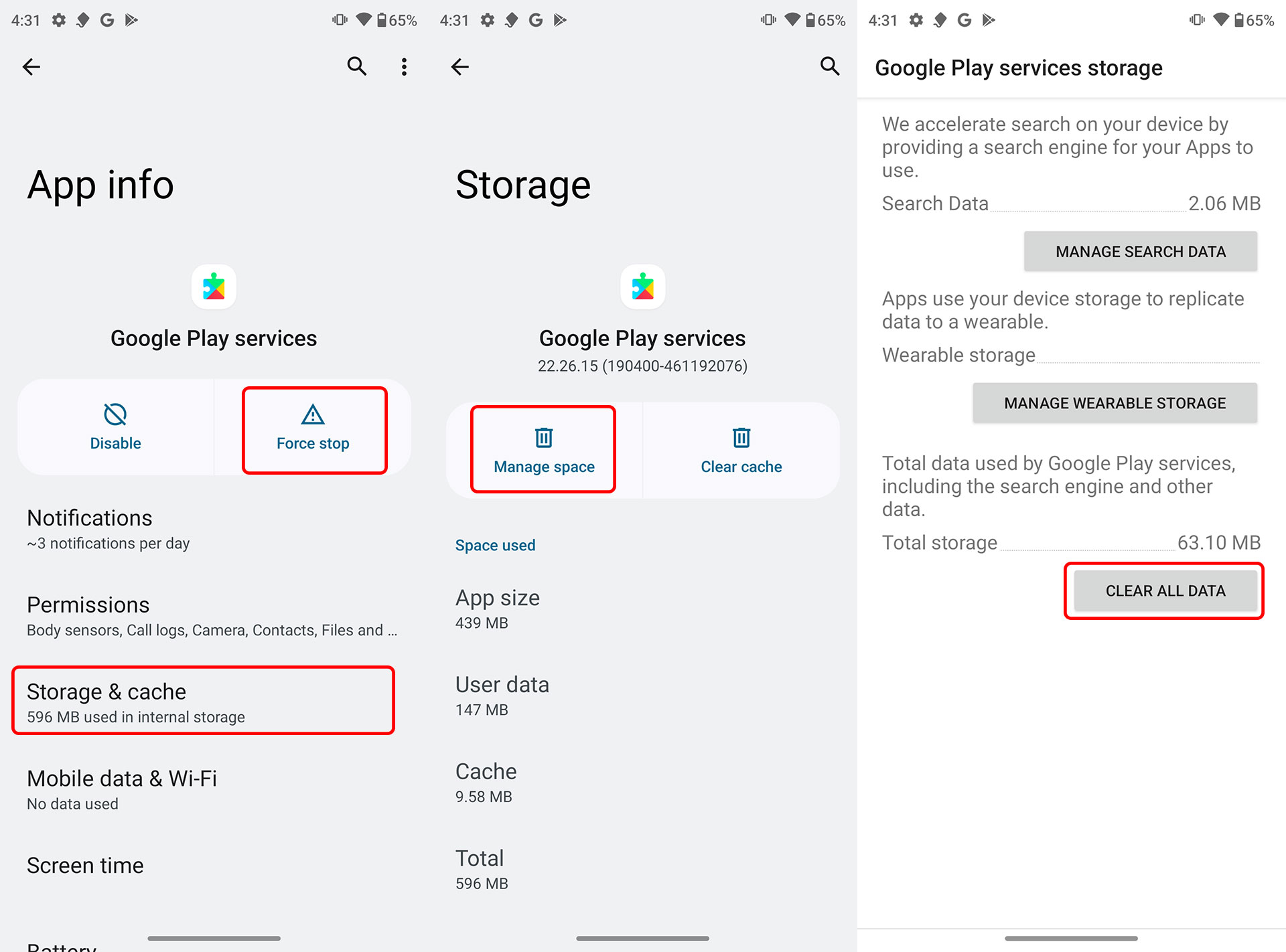
- Connect to an IP changing program; note that some may not work correctly. It is better to use applications that have a stable IP and low traffic and do not have DNS Leak because due to sanctions, some Google services to IP find out your identity and don’t allow you to use them.
- Open the phone settings again, go to the Google Settings section, and select Parental Controls. Tap Get started. Select the child or teen option
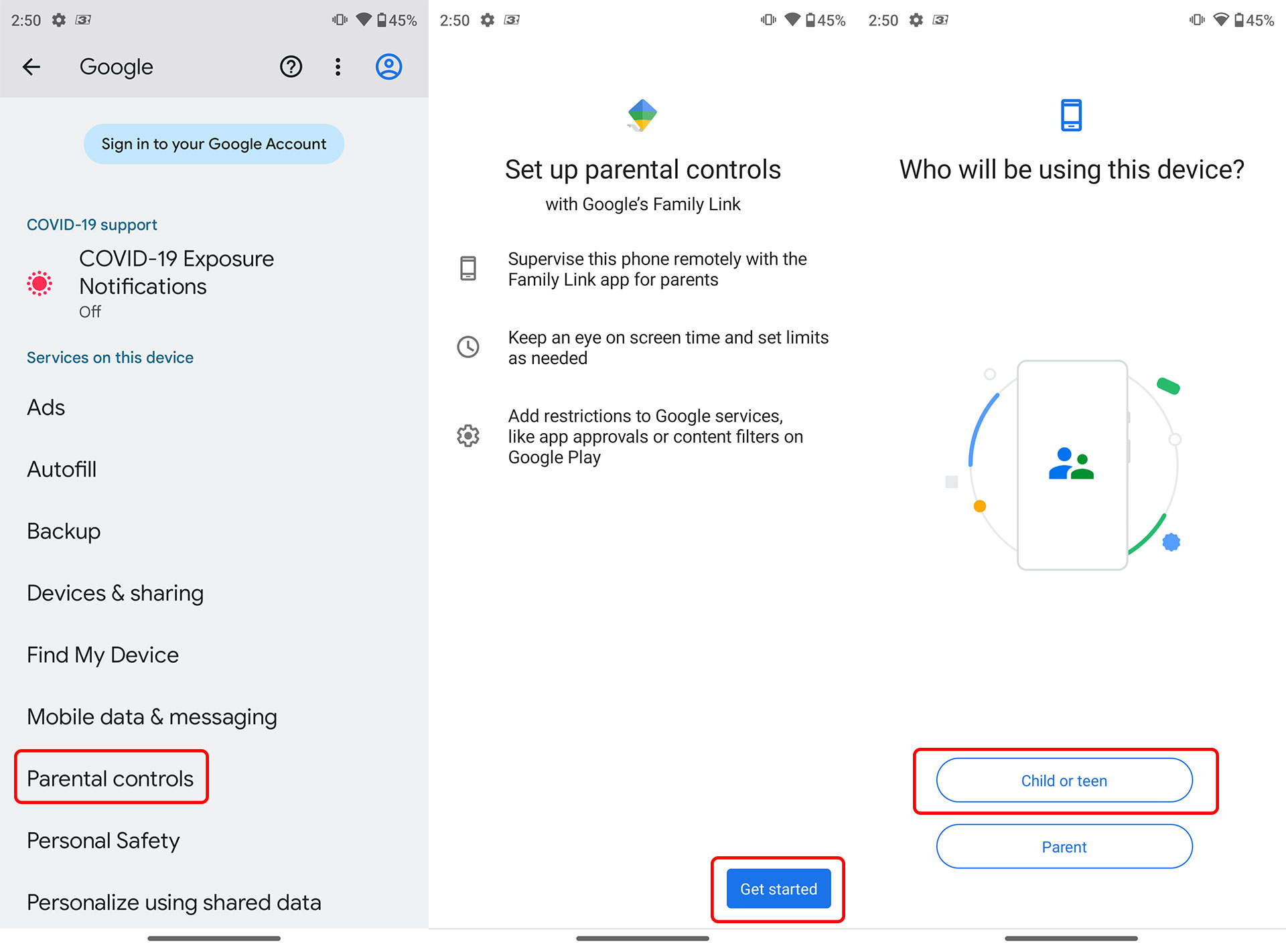
- Select Next. Tap on add or create an account for your child. On the next page, select Create Account and then For my child. Next, press Yes, continue.
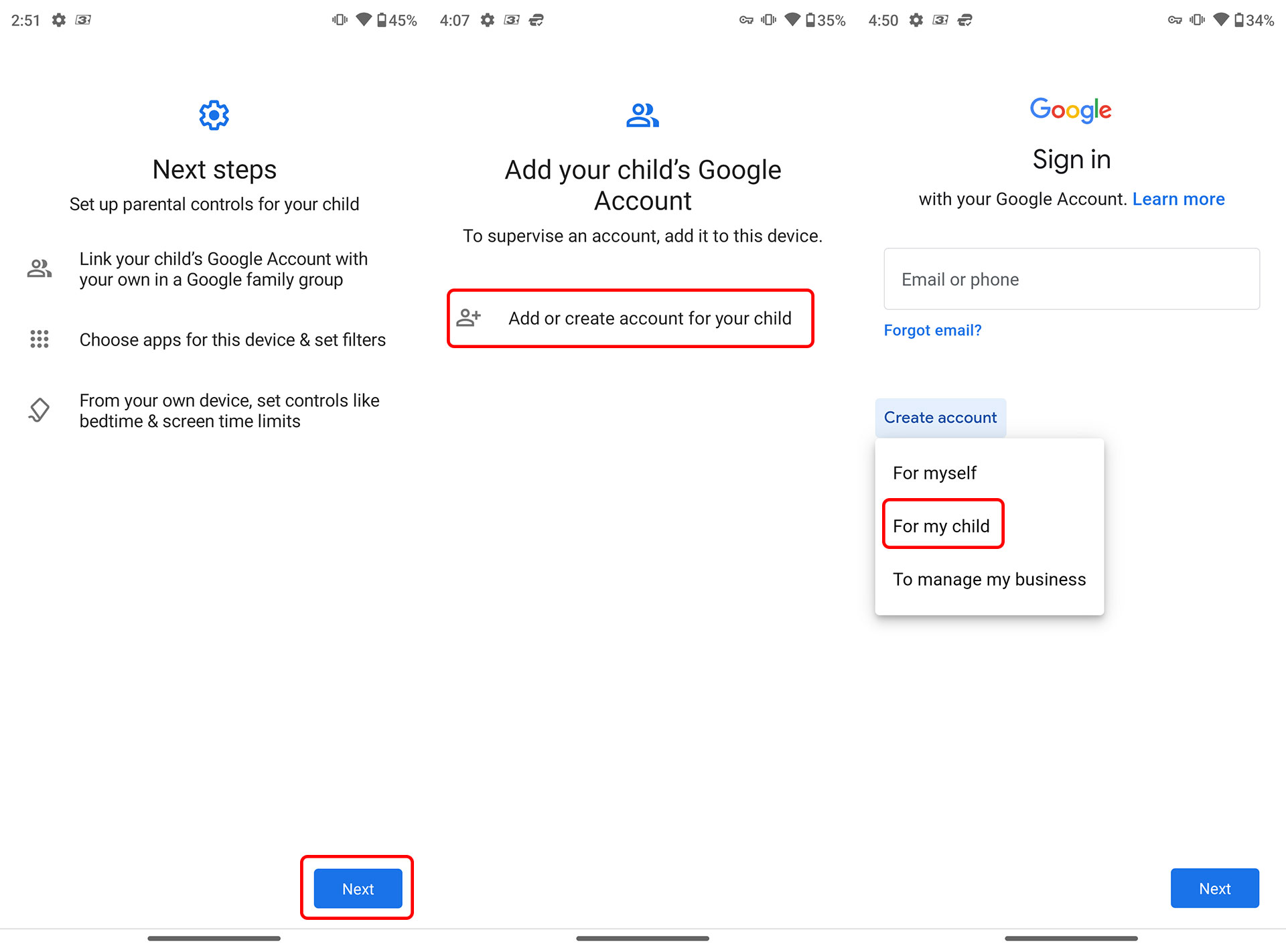
- Please enter your child’s first and last name and actual birth date. To join the exact date, convert the solar date to Gregorian using the tools available on the web. On the next page, please specify an email address for him as well.
- In the next step, enter your email as a parent. Select the two ticks marked to agree to the privacy policy and rules on the next page and tap Agree. Next, Google will ask you to personalize the main settings of the services available to your child, which we recommend you do from the beginning, so choose the Manual personalization option.
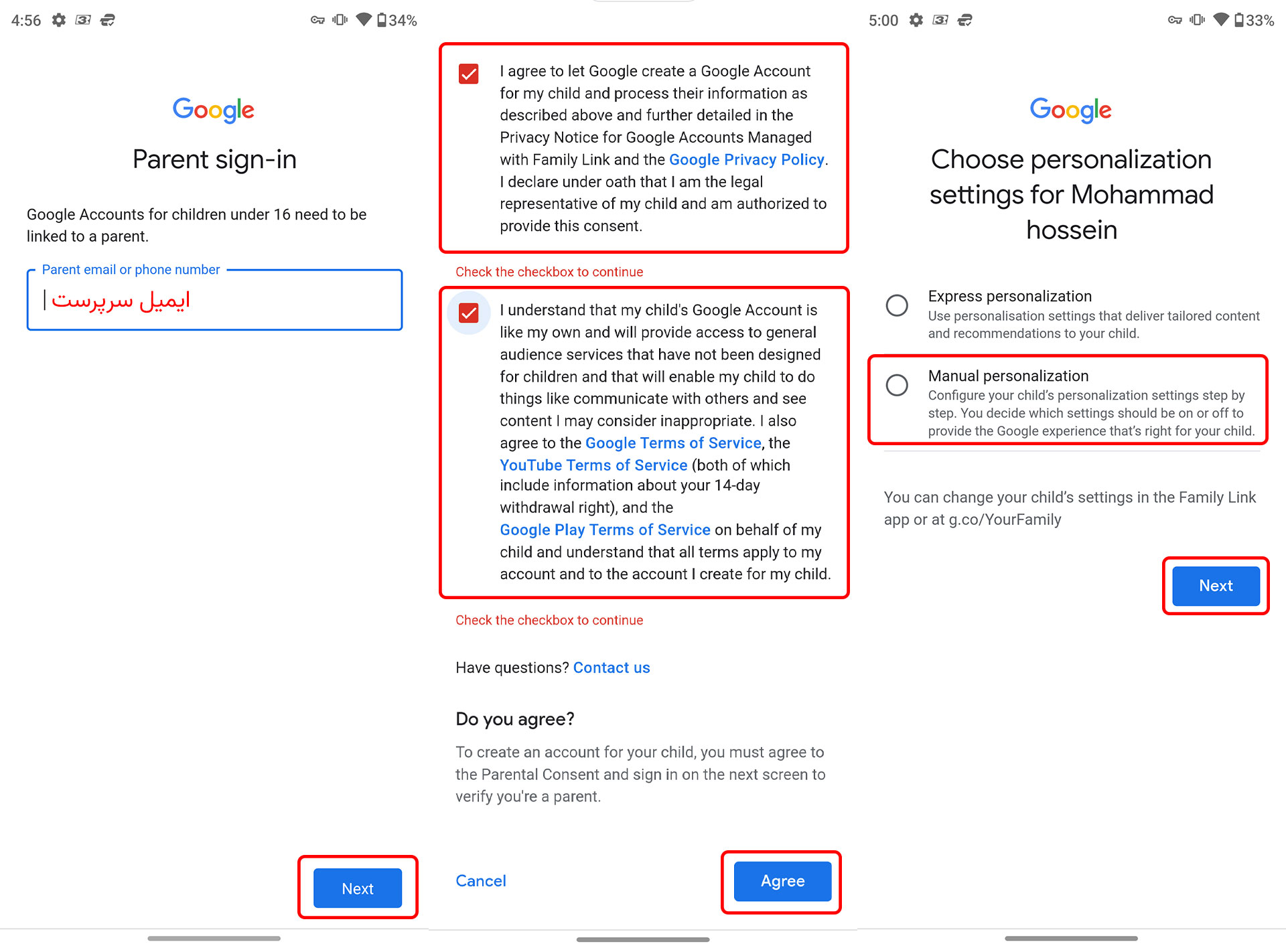
- Here you have to configure the basic settings in four steps.
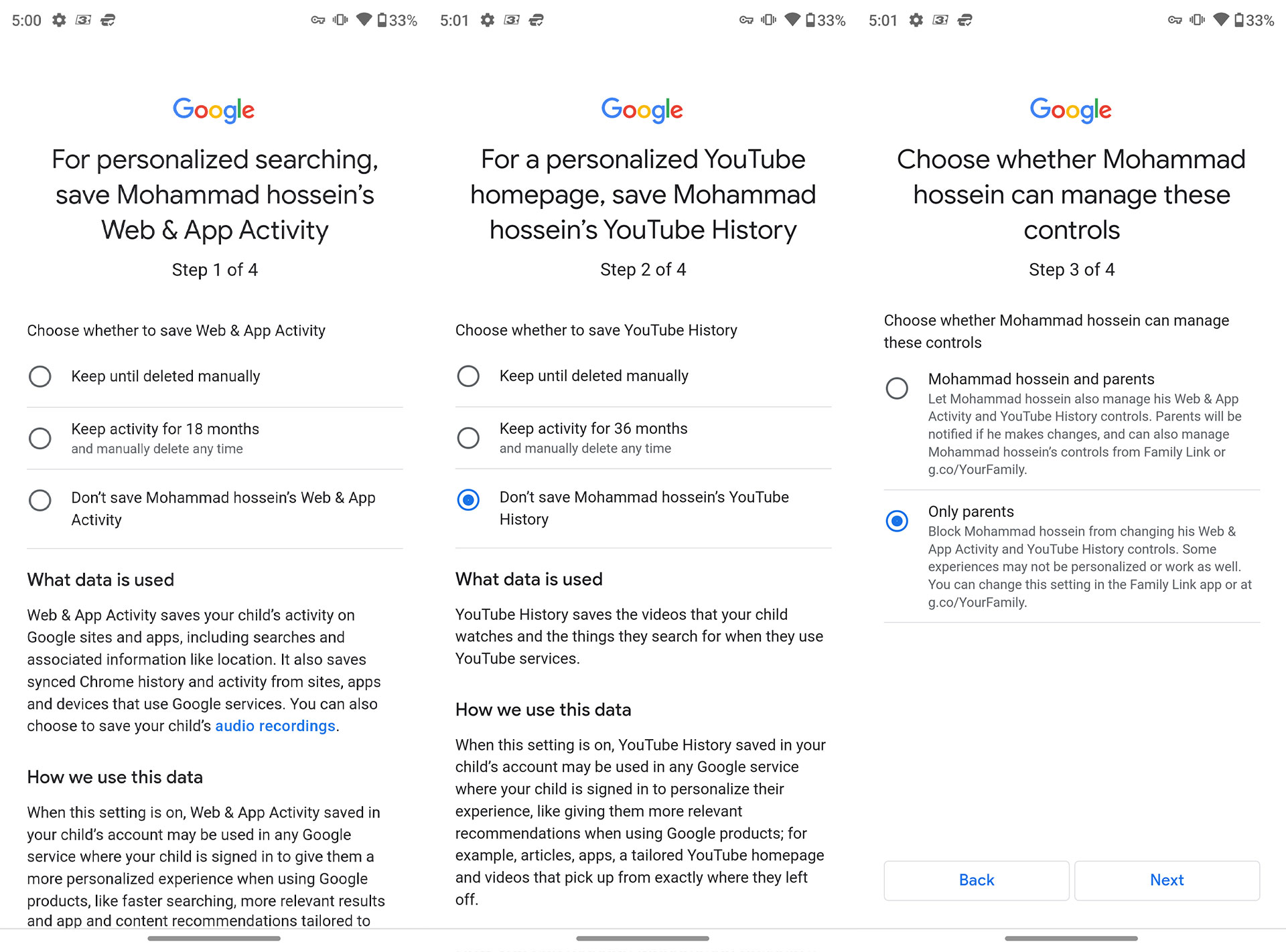
1. In the first step, you will be asked about the storage of the child’s micro-activities in Google services, including the operating system itself, applications, and search history, where you can determine whether these activities are not saved at all, are automatically deleted after 18 months, or until you choose to do so. Do not delete them, and I will preserve them.
Keeping these activities can help provide personalized content and improve offers to your child.
2. In the second step, you must specify your desired option regarding the YouTube account. These settings can change in the future.
3. In the third step, you should determine whether your child can change the above settings in the future or if he needs your permission. In the fourth step, a summary of the settings you have chosen will display, and you can go to the next step by pressing Confirm.
- In the next part, Google informs about the data it extracts from how people use its services and the processing done on them and explains the reasons for collecting the data, which is better to read and click Agree if you agree.
- If you want another person besides you to manage the child’s device, enter their email in this field; otherwise, click on Skip.
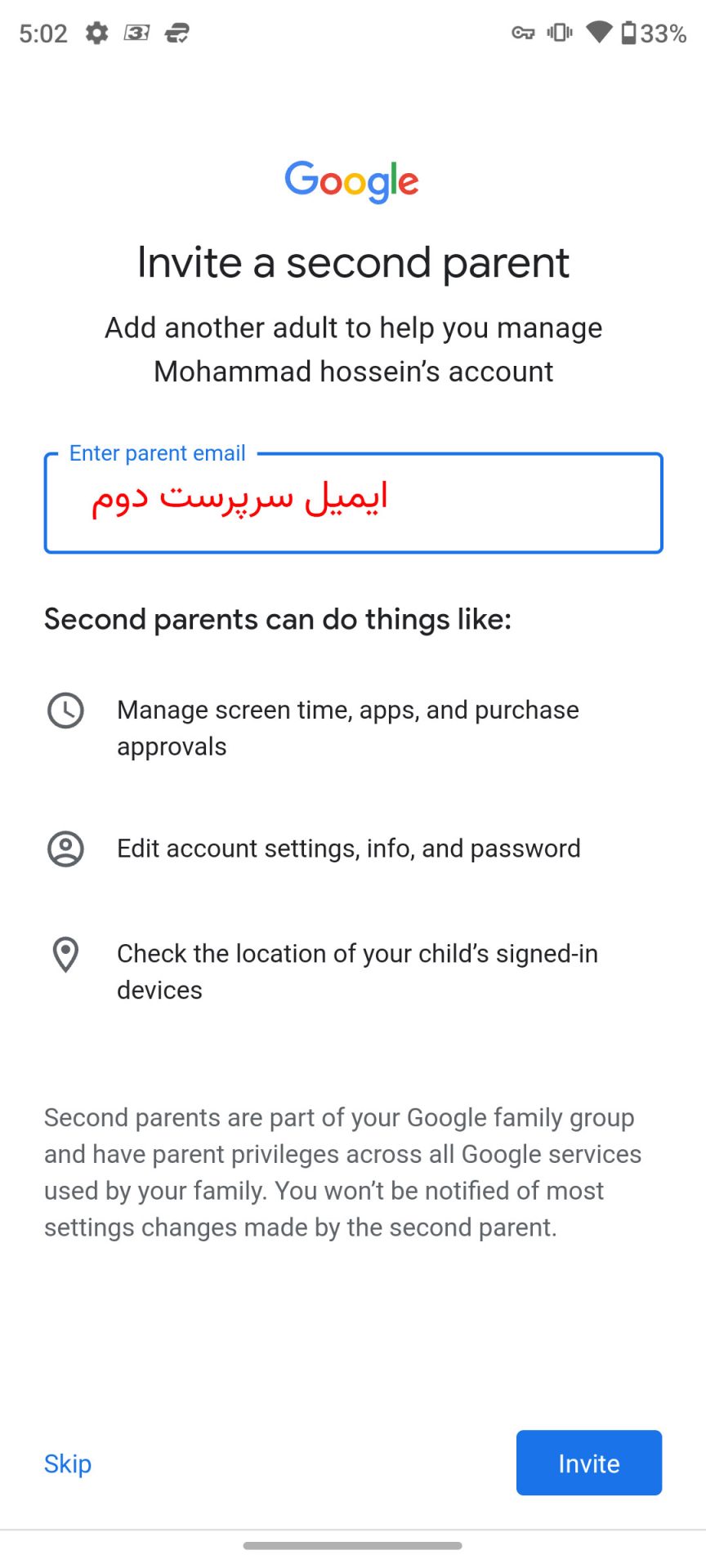
- This step is dedicated to setting the limits. The content the child can access in Google Play or the filters applied to the displayed content when searching or browsing web pages is specified in this section.
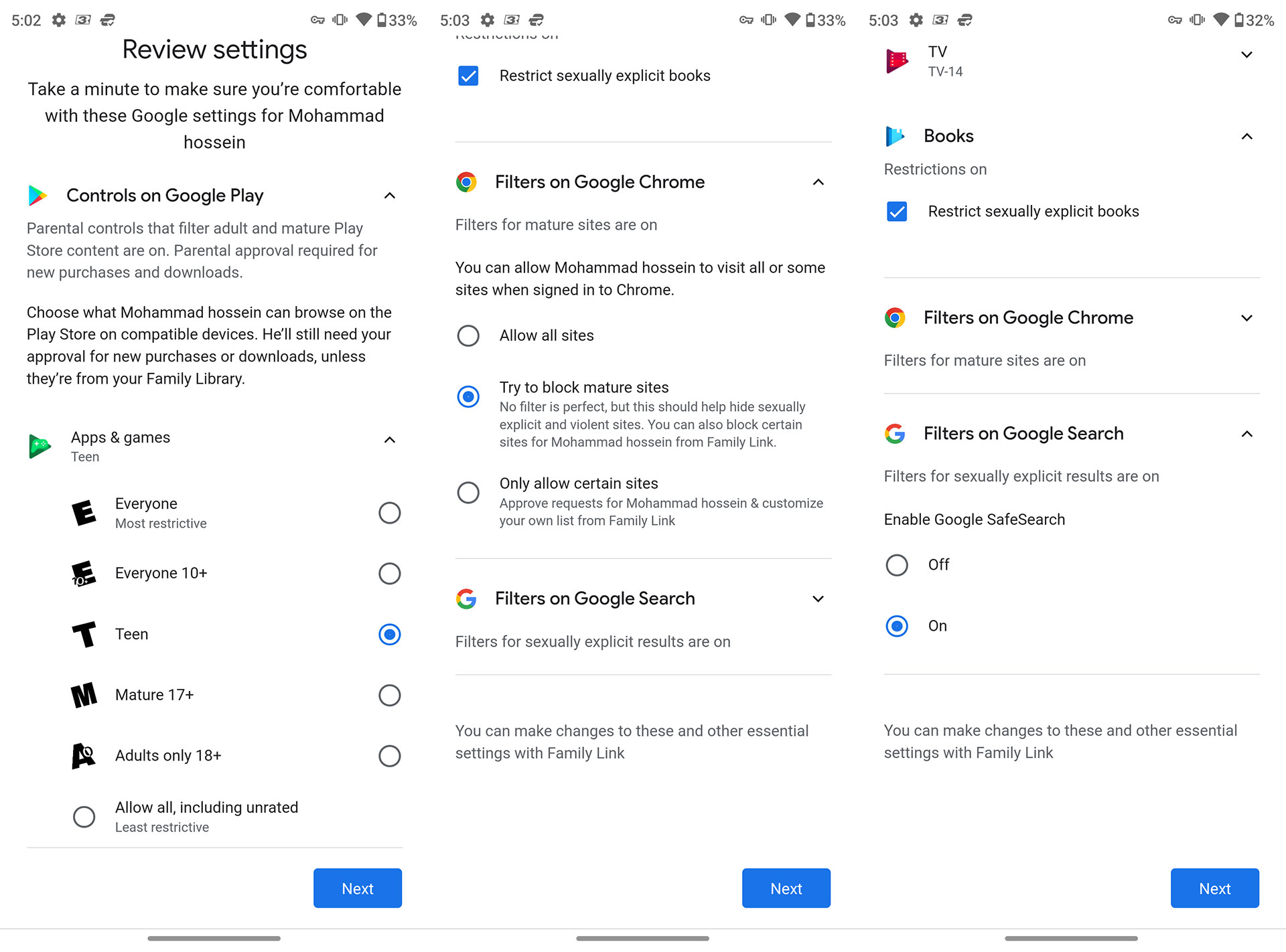
1. Click on Controls on Google Play to set age restrictions on Google Play content. The default content age categories are selected based on the child’s age and following the country’s laws, but you can change this category for each section, such as the app store, video and TV, and books.
2. Click on Filters on Google Chrome to change the content display settings when browsing web pages in the Chrome browser. It is enough to choose the middle option, i.e., Try to block mature sites, but if you have specific locations in mind, you can define these sites by selecting the third option so that access is blocked. Note that this restriction applies to Google Chrome. If another browser is installed, this setting may not affect it.
3. If you click on Filters on Google Search, you can enable Google’s SafeSearch feature when searching. This setting is only your responsibility, and the child cannot change it. After configuring these three options, click Next.
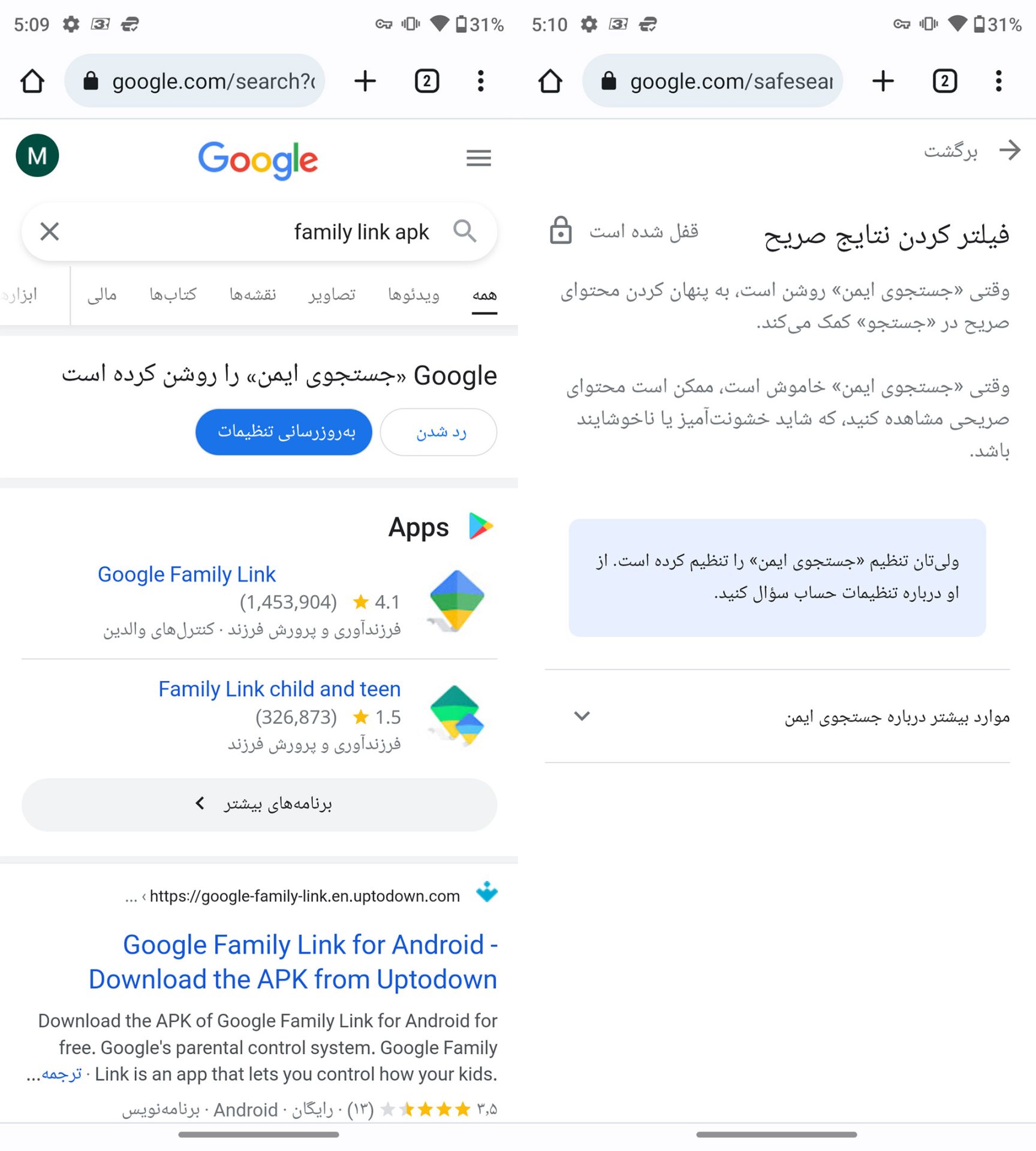
- Now Family Link Manager must be installed to control the phone using it. Tap Next and then Allow.
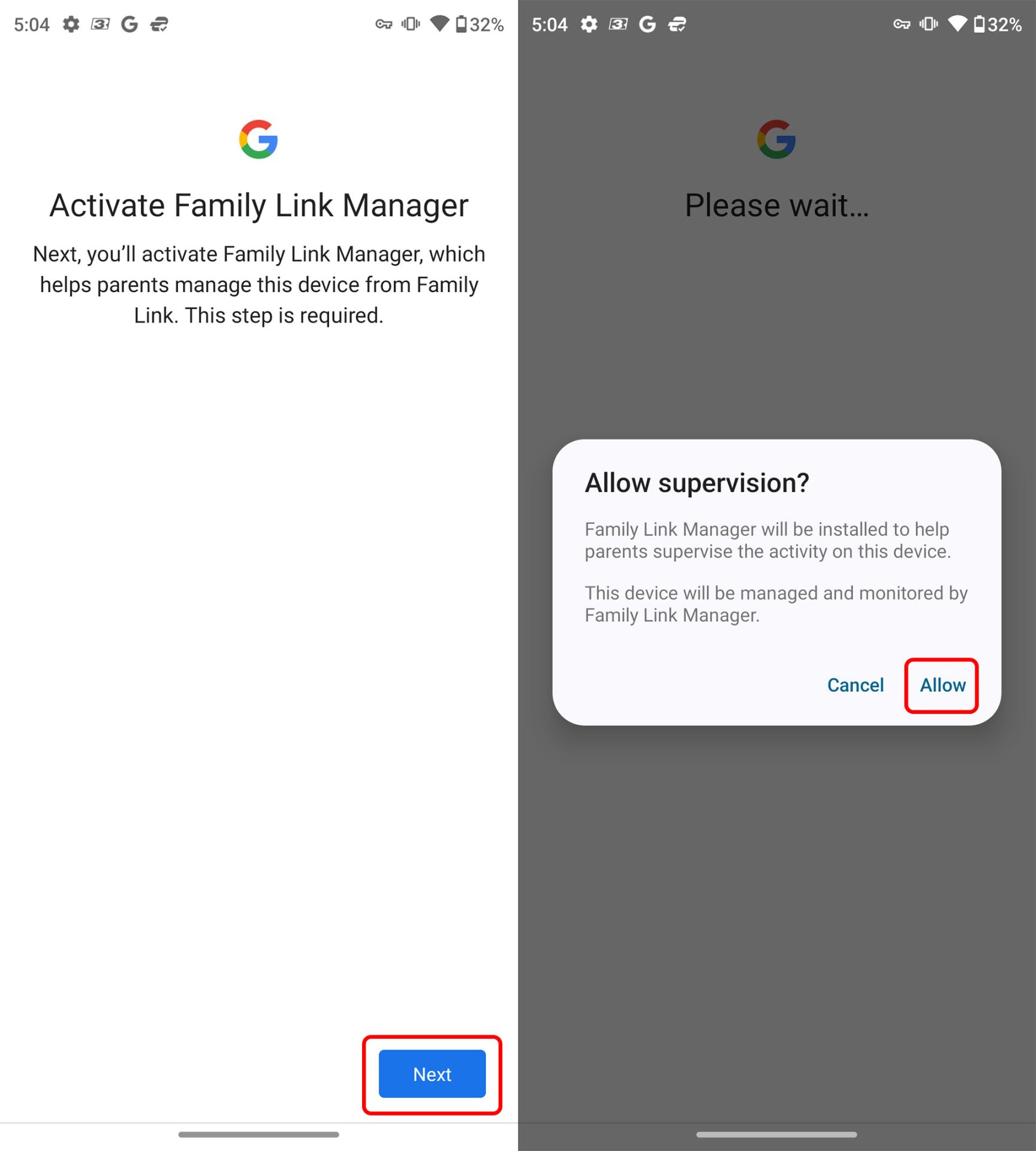
- Now we reach the stage of setting the time limit for using the phone. There are two parts here, and one is to limit phone use based on hours; from the Weekdays and Weekends section, you can set two separate limits for regular weekdays and weekends. The next part is about restricting the phone before sleep, and here you can set two different times for the nights when your child goes to school and the nights of holidays. After creating these restrictions, the phone will be locked during the specified hours.

- The final step is related to checking the installed applications. Here is the list of installed apps categorized by age rating. Programs that do not have a specific age limit are marked with Everyone. The rest of the plan may have different symbols based on the age classification of other countries. Disable any apps you want the child not to have access to so they are removed from the phone.
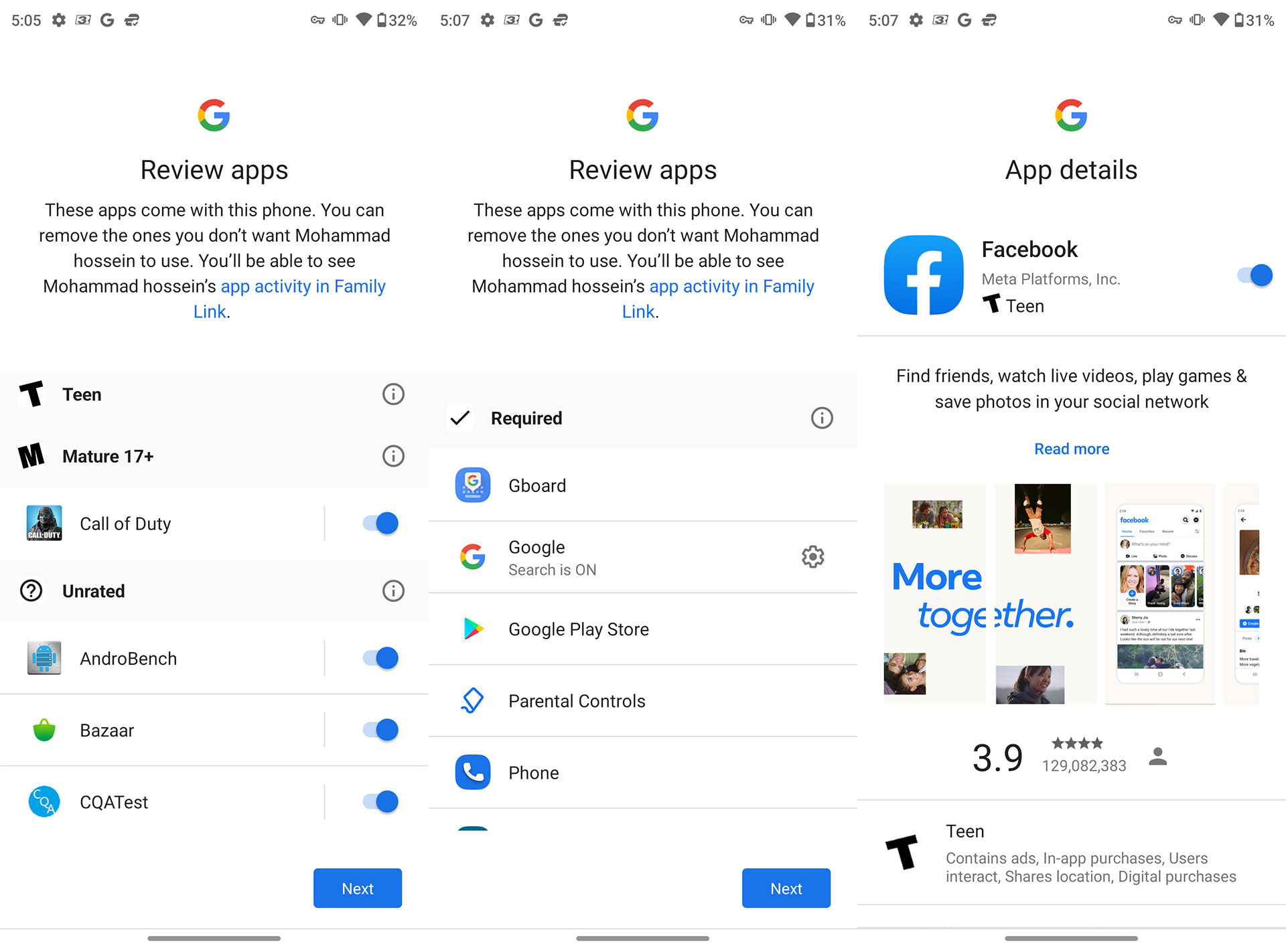
- In the end, you can install the Family Link program on your phone so that it is possible to manage the phone’s activities remotely. After installing the program, you will see a message based on connecting the child’s device and the guardian.
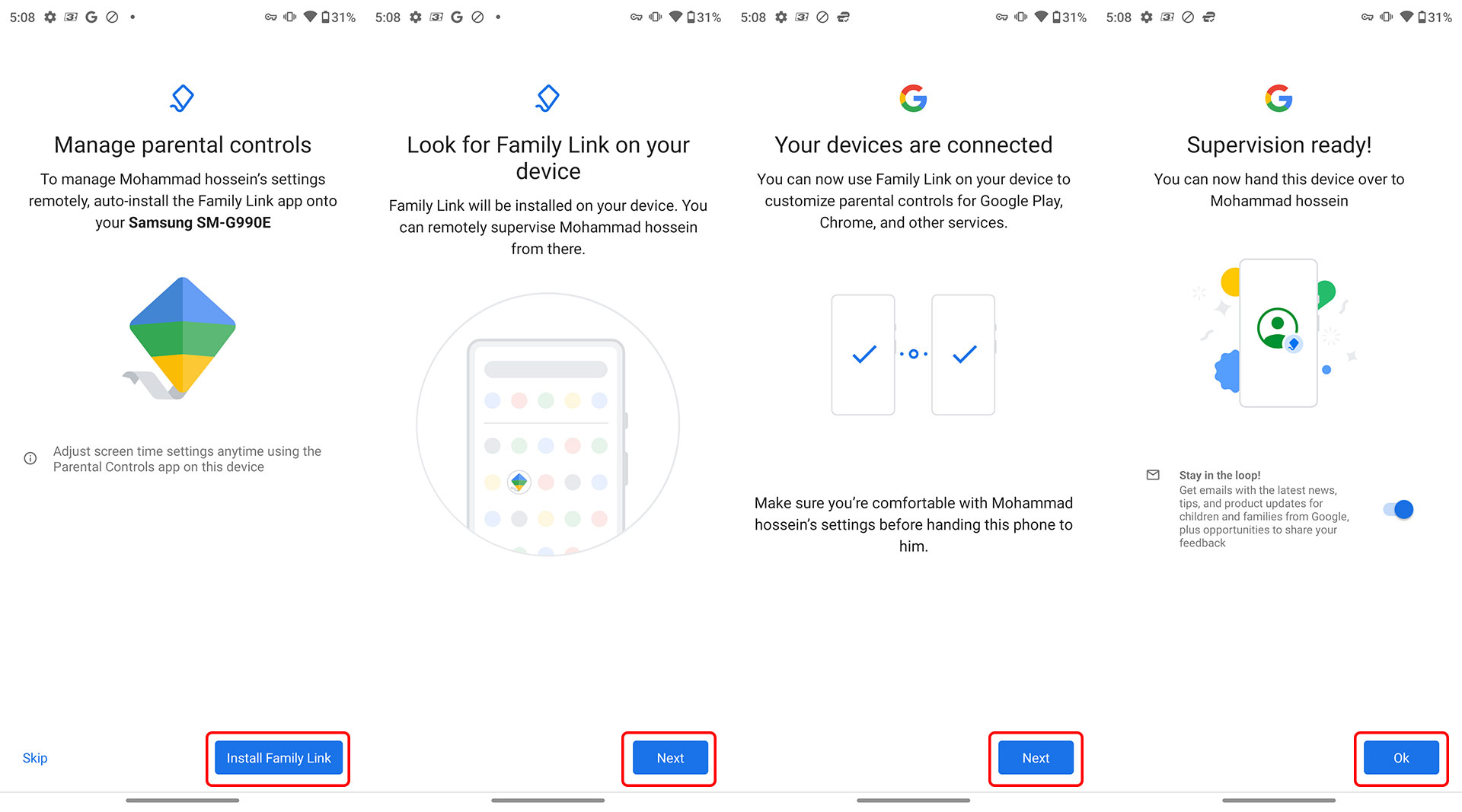
How to use Google Family Link and learn about its features
The child’s account has been created. You can access several options through the Parental Controls application on the child’s phone and the Family Link application on your phone, which we will examine below. It is essential to mention that when visiting any of the applications, you must activate the IP change software.
In addition, if you encounter a problem or error in any of the above steps, select the Retry option repeatedly. If the Family Link application is not installed on your phone or your phone is an iPhone, use the links below to install it.


After installing the application, enter it, then follow the steps below to set up and connect your device and your child:
- Tap Get started, select Parent, and tap Next.
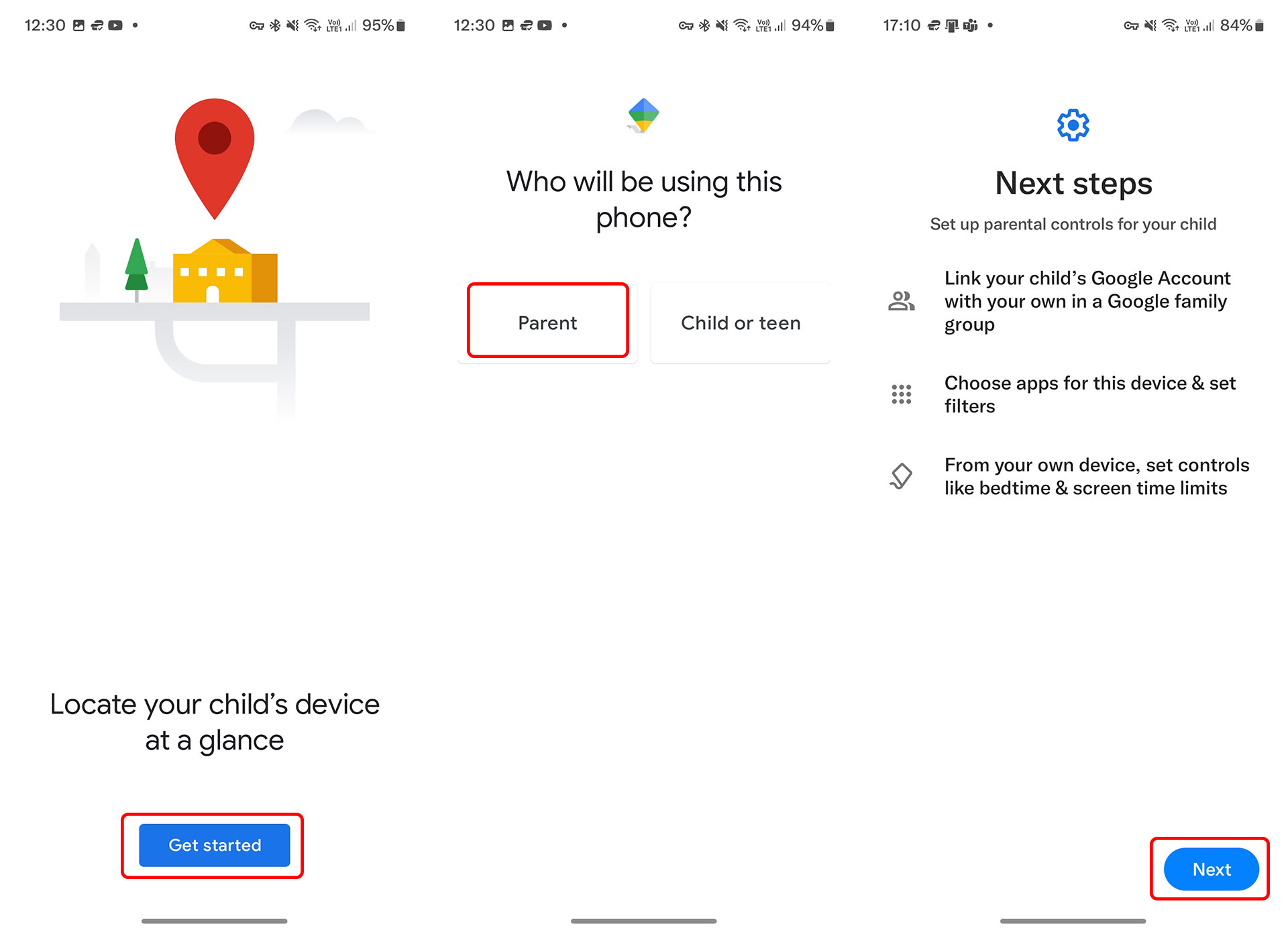
- Click Next again to set your account as a family leader. If the Google account you set as the administrator when creating the child’s performance is not placed on your phone, click on Switch account and add that account; But if the same version is already logged in on your phone, select Continue. Next, you will be asked if the child has a Google account or not because we have created a new account in the previous steps, so choose Yes.
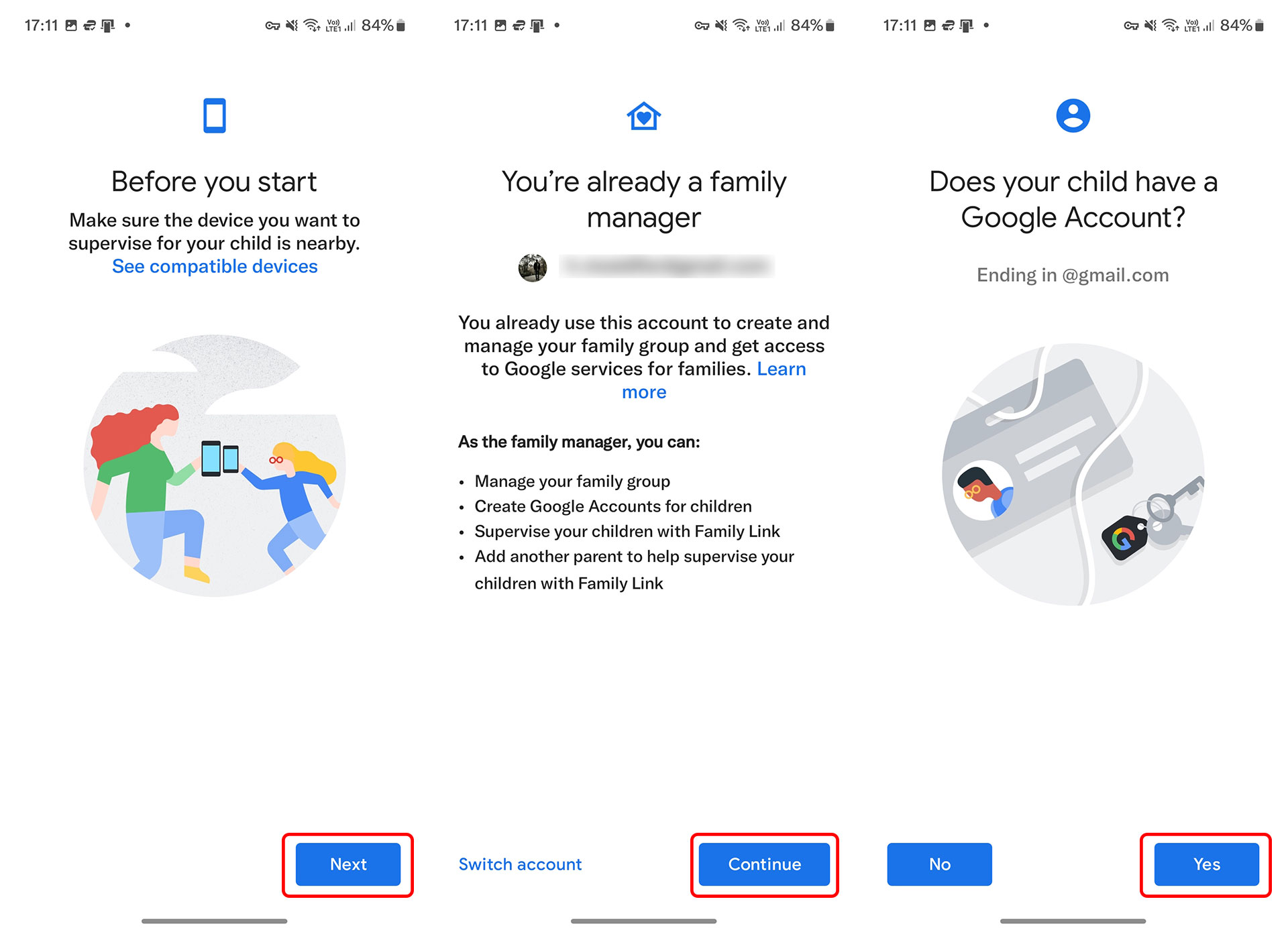
- Now select Done to enter the main screen of the application. If this does not happen, close and reopen the program.
App activity
In this card, you will see a graph of the time of using the phone every day, and a list of used apps will display based on the duration of their use. If you tap More, the complete list of apps will load. You can change the day by clicking on the arrow next to the date. There are also three options above to change the interval to week and month; by selecting them, the total time of using the device will show.
In the list of applications, if you tap on each one, you can prevent the child from using it by turning off Allow app. You can even disable some of the app’s access (for example, camera and microphone) by entering the Permissions section.
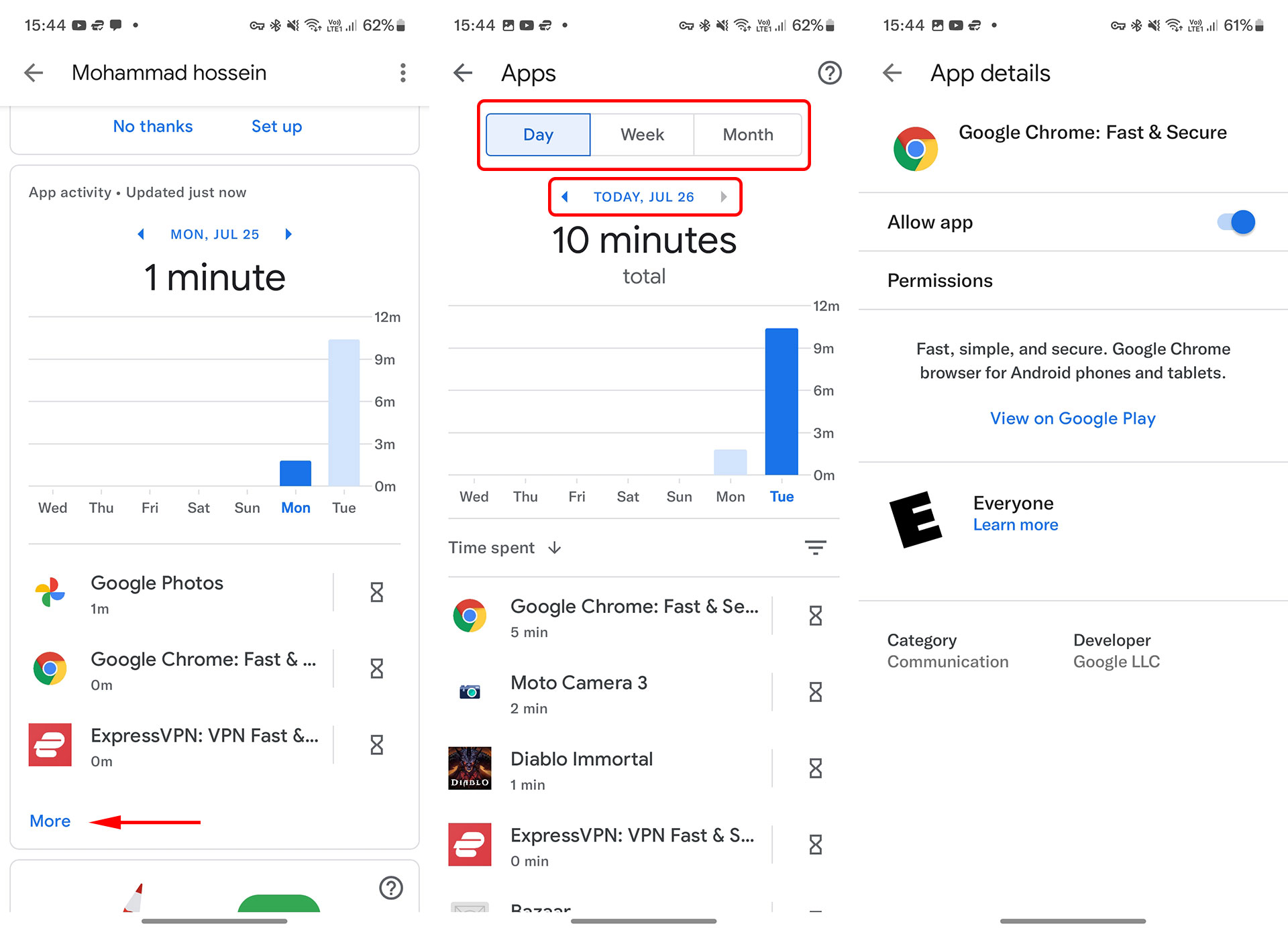
Next to the applications, there is also an hourglass icon, which displays four options:
- No Limit: By selecting this option, the user can use the program without a time limit, but if the total usage time of the phone ends, he cannot use this program either.
- Always allow: By choosing this option, the program can always use, and the duration of its use is not calculated in the overall benefit of the phone, but if the sleep time is defined and the phone is locked at that time.
- Set Limit: By choosing this option, you can define a separate limit for the use of each application. For example, set a 30-minute limit for a game.
- Block: Block the program entirely.
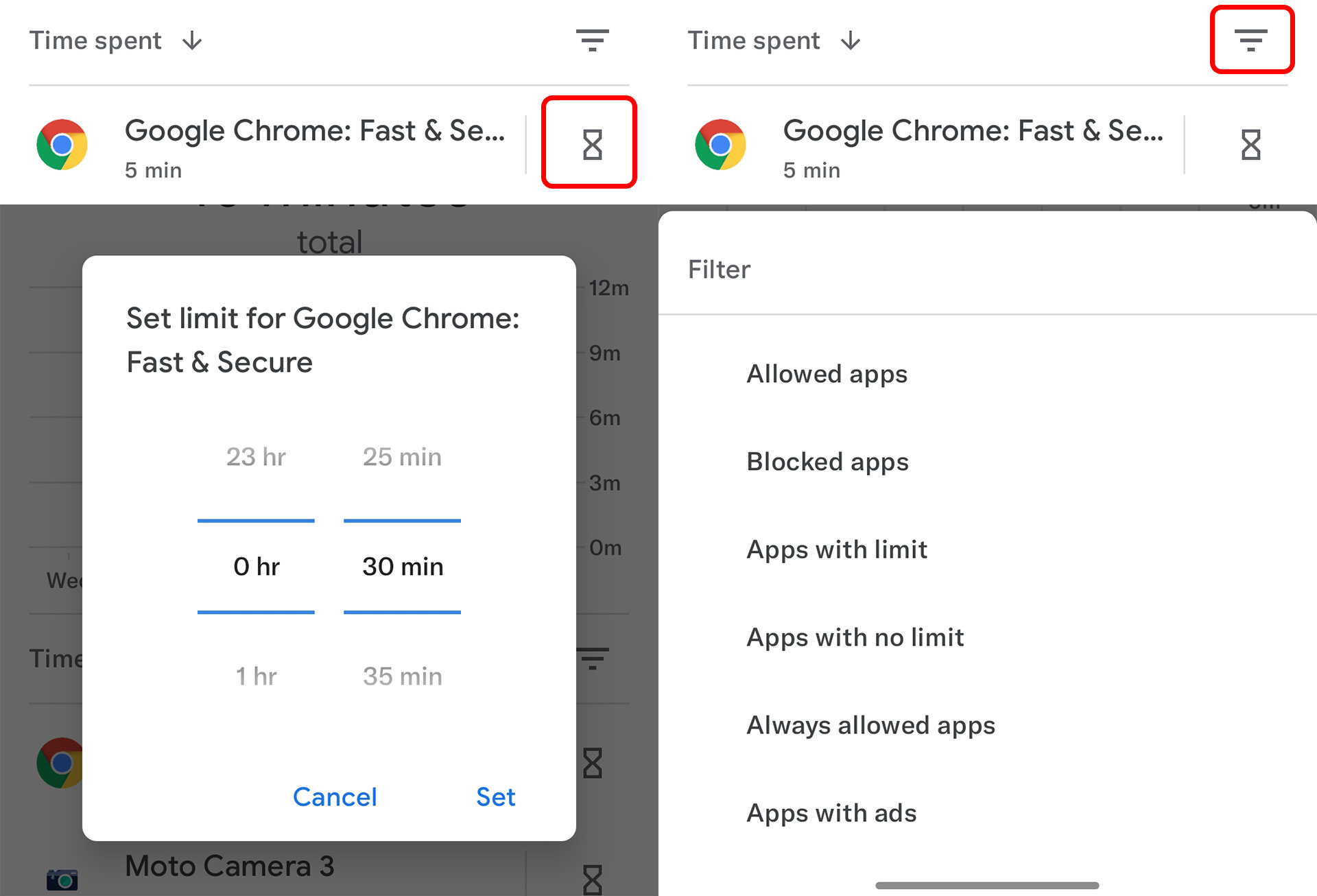
By configuring any of the above, the application category will change and be removed from the current list, in which case you need to tap on the three-line option at the top of the list and change the filter based on the type of restriction created. In this section, you can even filter programs that display ads and block them from the list of programs you don’t want.
Location
With this card, you can instantly see the child’s phone’s location. To do this, first, select Setup and then Turn On.
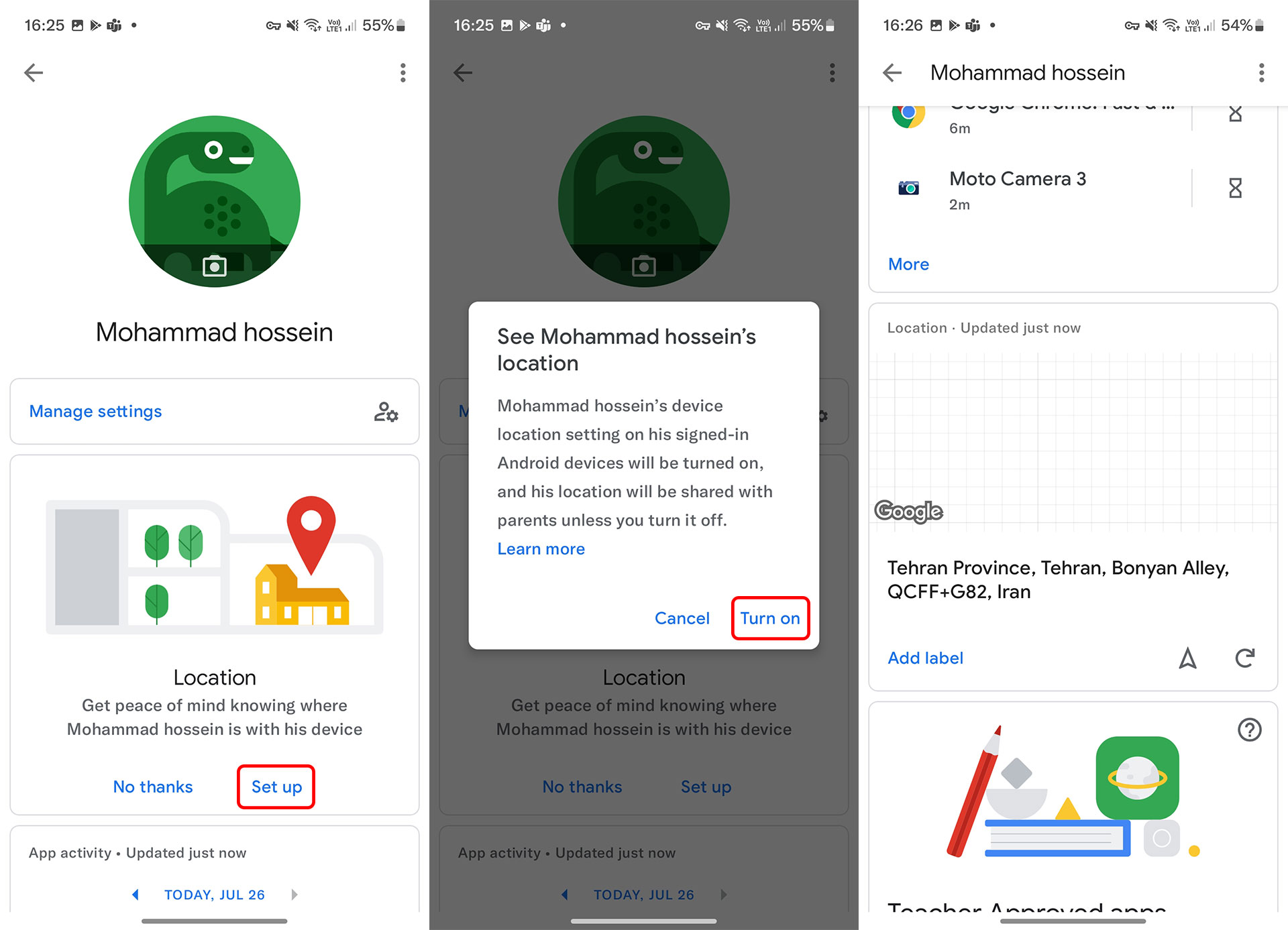
Teacher Approved apps
In this card, programs from Google based on his age and activities are suggested to you, mostly around educational or entertainment-educational applications. If you want to encourage the child to use these programs, you can choose one of the programs from this section and install it on his device.
Screen time
In this section, you can change the time limits for using the phone you defined in creating the child’s account, including the two areas of daily and bedtime time limits. In the Daily limit section, select the desired day and change the limit time to change the daily limit time. To disable the limit, you can disable the tick for that day, and in the Bedtime section, it is possible to change the child’s sleep time for any day.
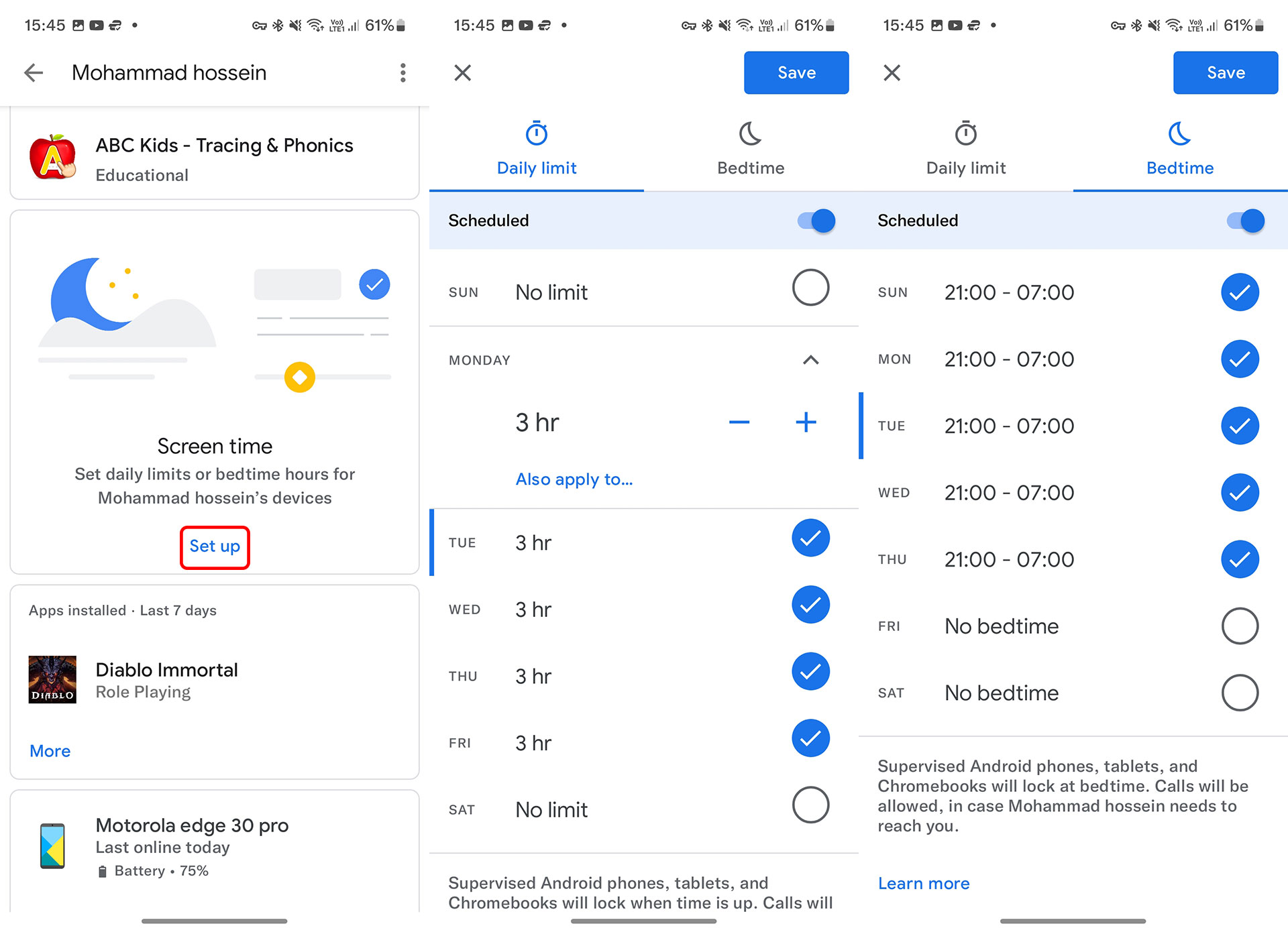
After reaching the time limit, the device is locked, and from here, you can remove the lock temporarily or increase the time to work with the phone for a few minutes by selecting the Bonus time option.
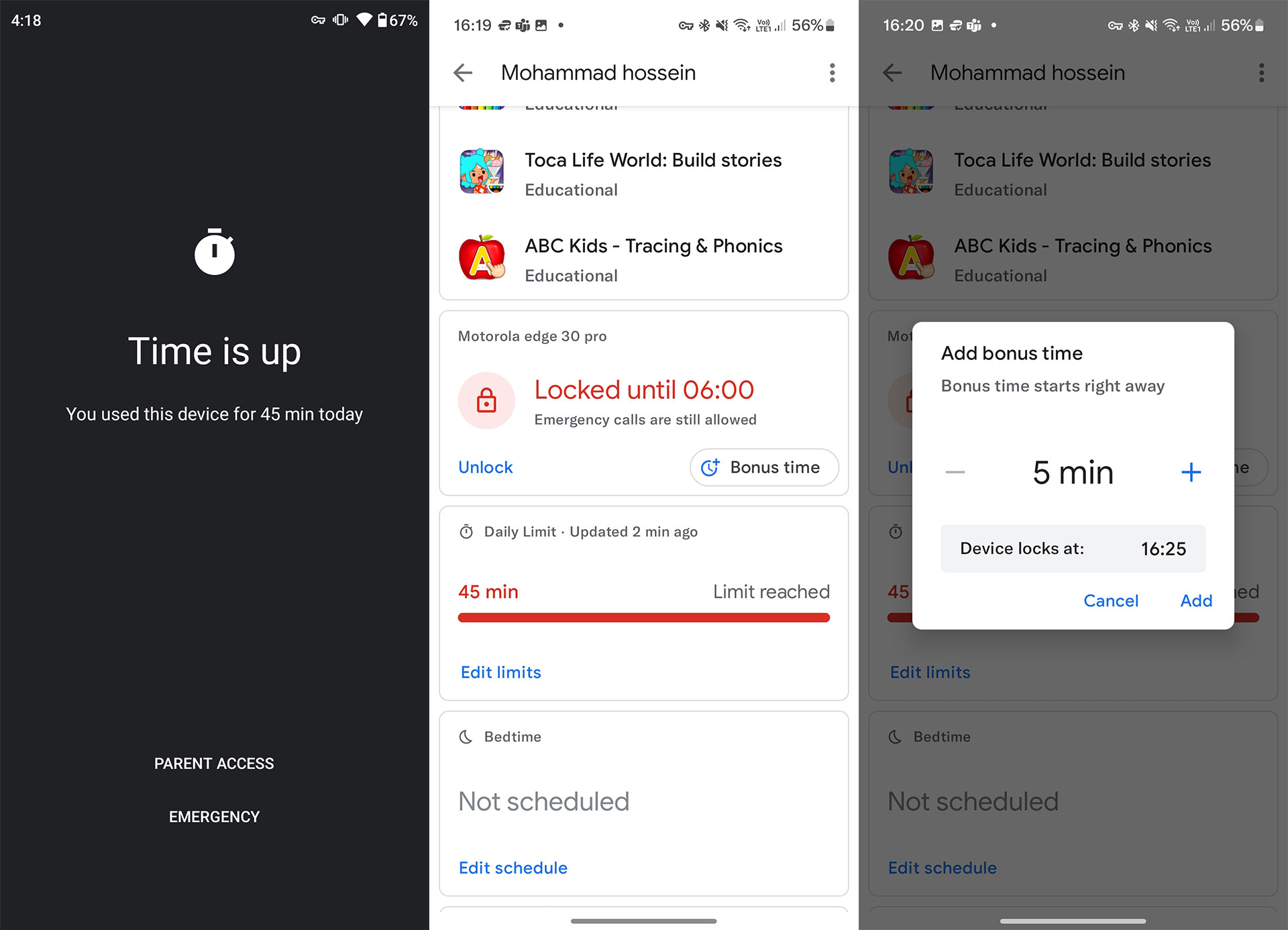
Condition
In the status card, you can check the last time the phone was online and the battery percentage. At the bottom, select the Play sound option, and the phone will ring loudly; and by selecting Settings, you will have access to the basic settings of the device:
- Add/Remove user: By activating this option, you give the person the option to add a new user profile to the phone.
- Apps from unknown sources: By activating this option, a person can install apps from a place other than Google Play
- Developer Options: By activating this option, one can access the developer options of the phone
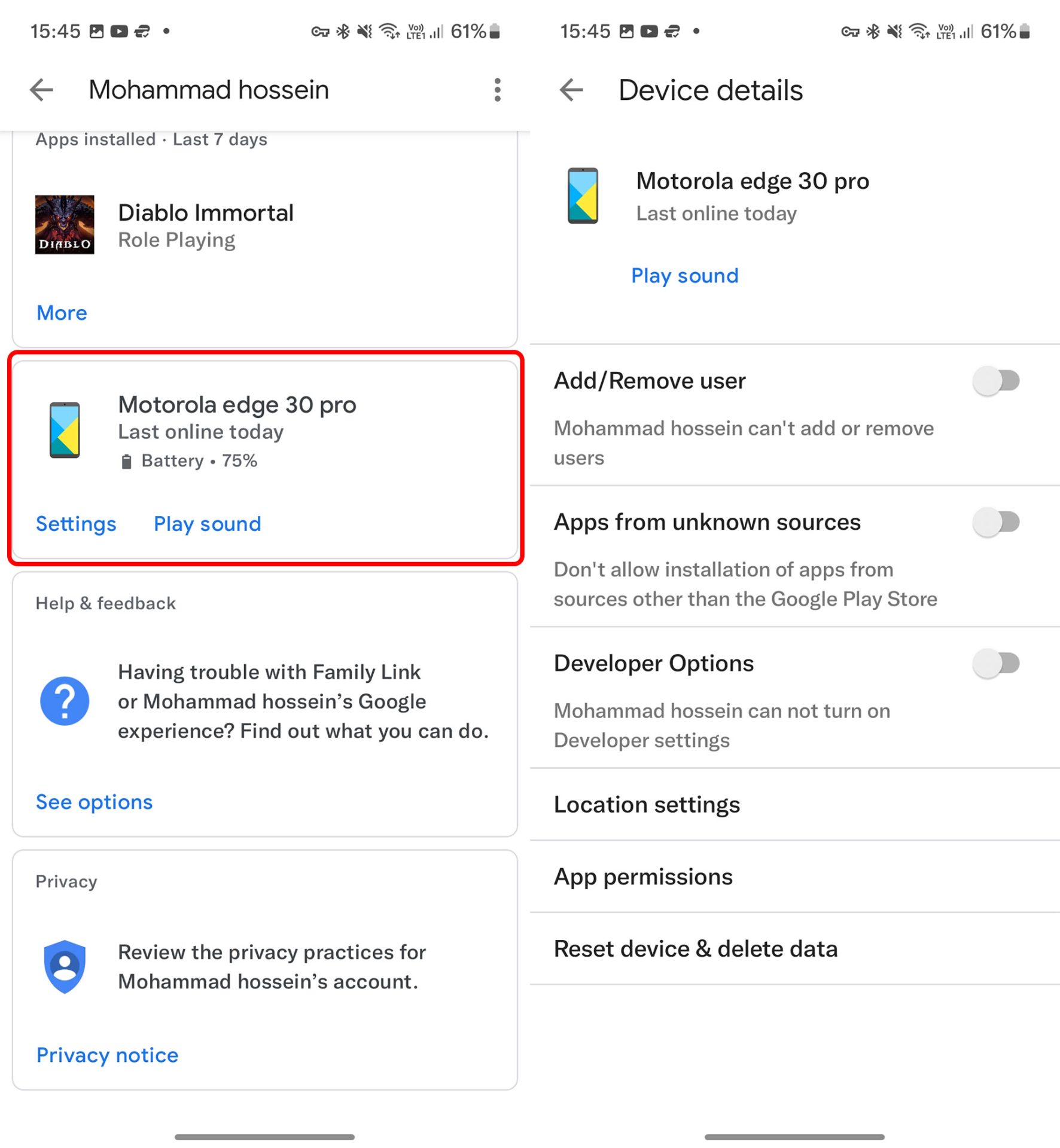
We recommend that you turn on the above three options temporarily and turn them off after you are done with that option because, with each action, it will be possible to change the settings or perform activities by the phone user that will be out of the control of the system administrator tool. Apart from the above, there are three other settings:
- Location Settings: In this section, you can turn off the phone’s location and change its accuracy level.
- App Permissions: In this menu, you can manage and control all available access to phone applications. By entering each entry, a list of applications for which this access is allowed or not allowed is shown, and you can, for example, turn off or on the entrance to text messages for each application.
- Reset device & delete data: If the child’s phone is lost or you want to reset it, you can do it from this section.

Child account management and content display settings
At the beginning of the page, there is a card for the settings related to the child’s Google account, which is related to how to use Google services on the phone or other devices. By tapping on Manage settings, settings such as leveling Google Play content, enabling safe search, filtering inappropriate sites for Google Play sections, the Chrome browser, and the search service you configured when creating an account can change from here.
In the YouTube section, you can choose between YouTube for children and general YouTube; in the case of available YouTube, you need to make more settings such as setting the age range to limit the content, and Google also warns you that some content may still be Not suitable for viewing. And in the Photos section, you can also disable sharing images from the child’s device.
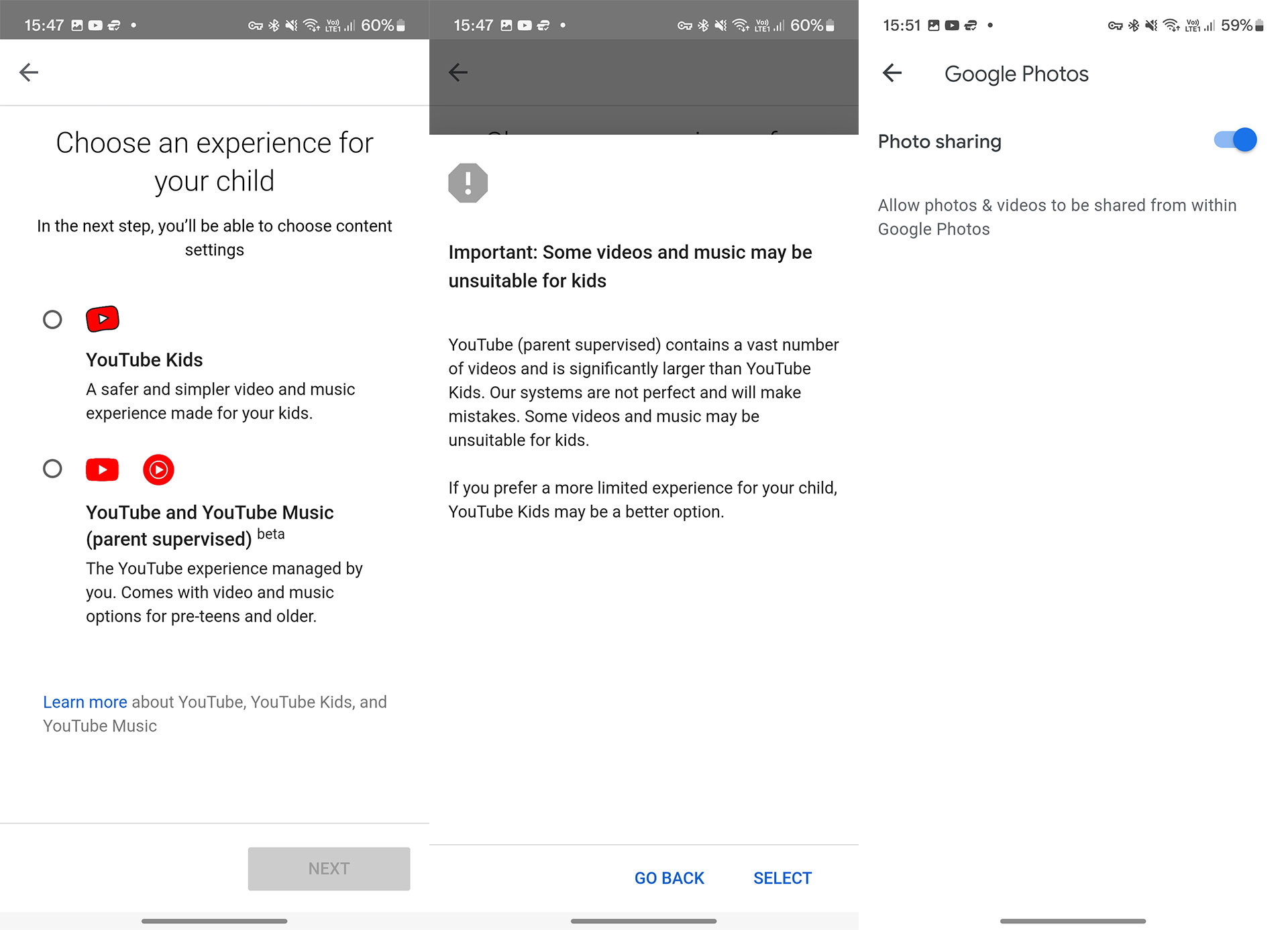
In the second part of the page, where it is related to user account settings, you can change these settings:
- Account info: correct personal information such as first and last name and birthday if entered incorrectly, and change the password or delete the account.
- Controls for signing in: If the child wants to log in to a device or site with his email, you can determine from this section whether he needs your permission and approval or not.
- Controls for third-party apps: This option is used to manage access to applications and sites using a Google account without registering; in this case, you can determine whether or not permission is required to access.
- Location: If you enable See your child’s place in this section, you can see the child’s spot in any department or device where access to the area is allowed.
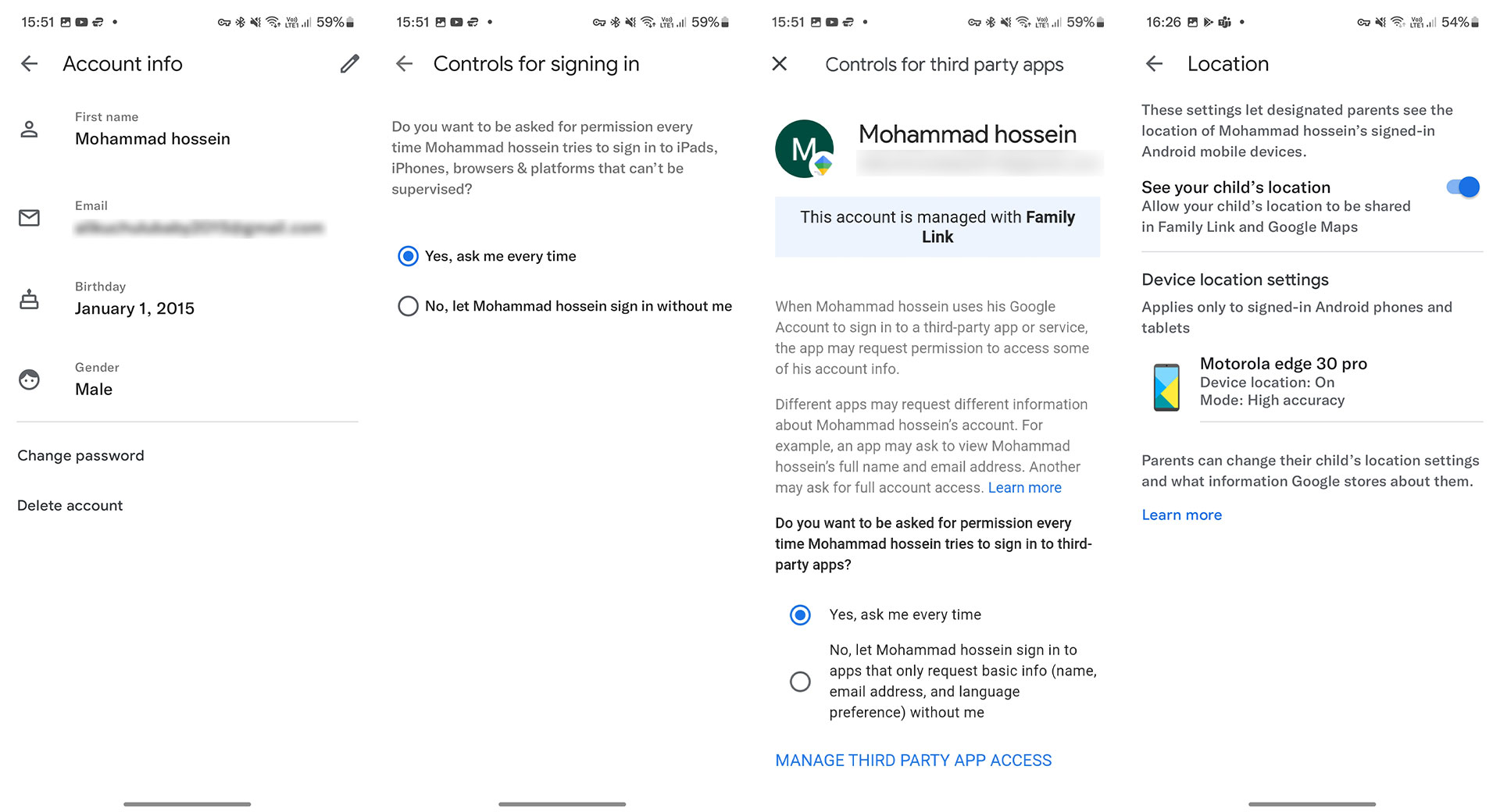
- Privacy settings: This section includes data storage related to the use of services, which is your child’s privacy settings. If you go to the Account data settings section, you can decide whether to store this activity data of your child in his account:
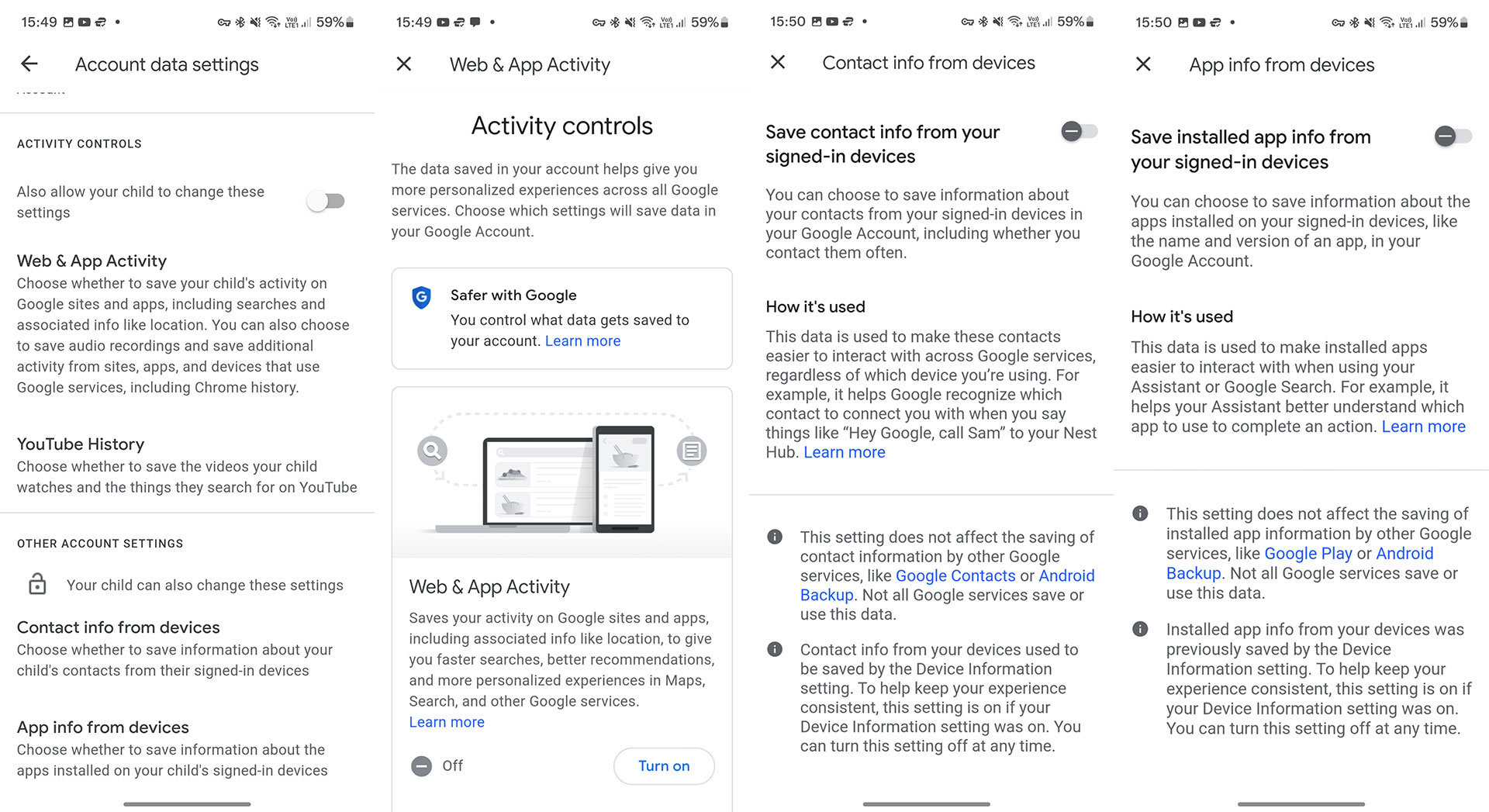
1. Web & App Activity: The minor user activities in Google’s services, including Android, are stored in this section. Suppose you want, in addition to the App activity section, which shows the child’s use of the phone and its time. In that case, more details of the activity, including when he went to which menu and what changes were made, as well as activities outside the operating system, including other services and View search history, you must enable this option.
2. YouTube History: YouTube is another important service of Google. Due to its different sections, the performed activities are stored entirely independently from other services; from here, you have to decide whether or not things such as search, watch history, and other items are recorded. Get.
3. Contact info from devices and App info from devices: These two options are used to store audience information and device application information, respectively, to provide better offers and more integrated interaction of applications with Google services.
Manage child permission requests to approve or deny
Above, we talked about the settings, which can be changed only at the user’s request and approved by the administrator. These requests are usually shown as a notification to the administrator. To view all requests and their history, go to the Family Link homepage, tap the top three lines, and select Approval requests. In the Pending section, you can reject or approve requests. Also, application installation requests from Google Play are listed here.
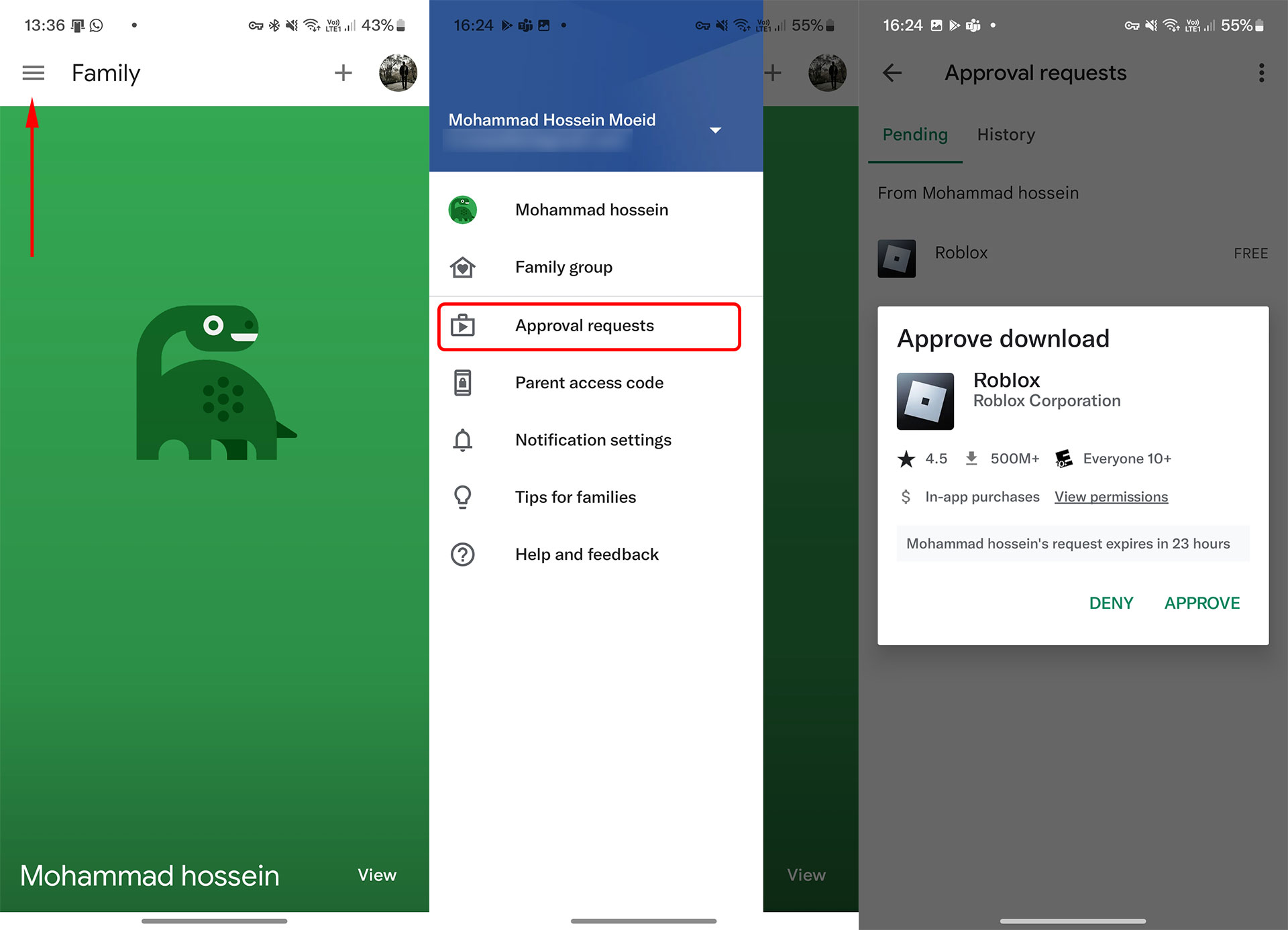
Temporary access code
When you want to change some settings on the child’s phone, install an application or delete the child’s account from the phone and disable parental control features, you need to enter the password of your account as an administrator, but if the child’s phone can access the Internet If not, you must use a temporary access code because password verification is only possible online.
To view the parental access code from the main page of Family Link on your phone, tap on the top three lines option and select Parent access code. Then on the child’s phone, where you are asked for a password, select Try another way and enter the temporary verification code. This code is valid for five minutes, after which you need to get a new code.
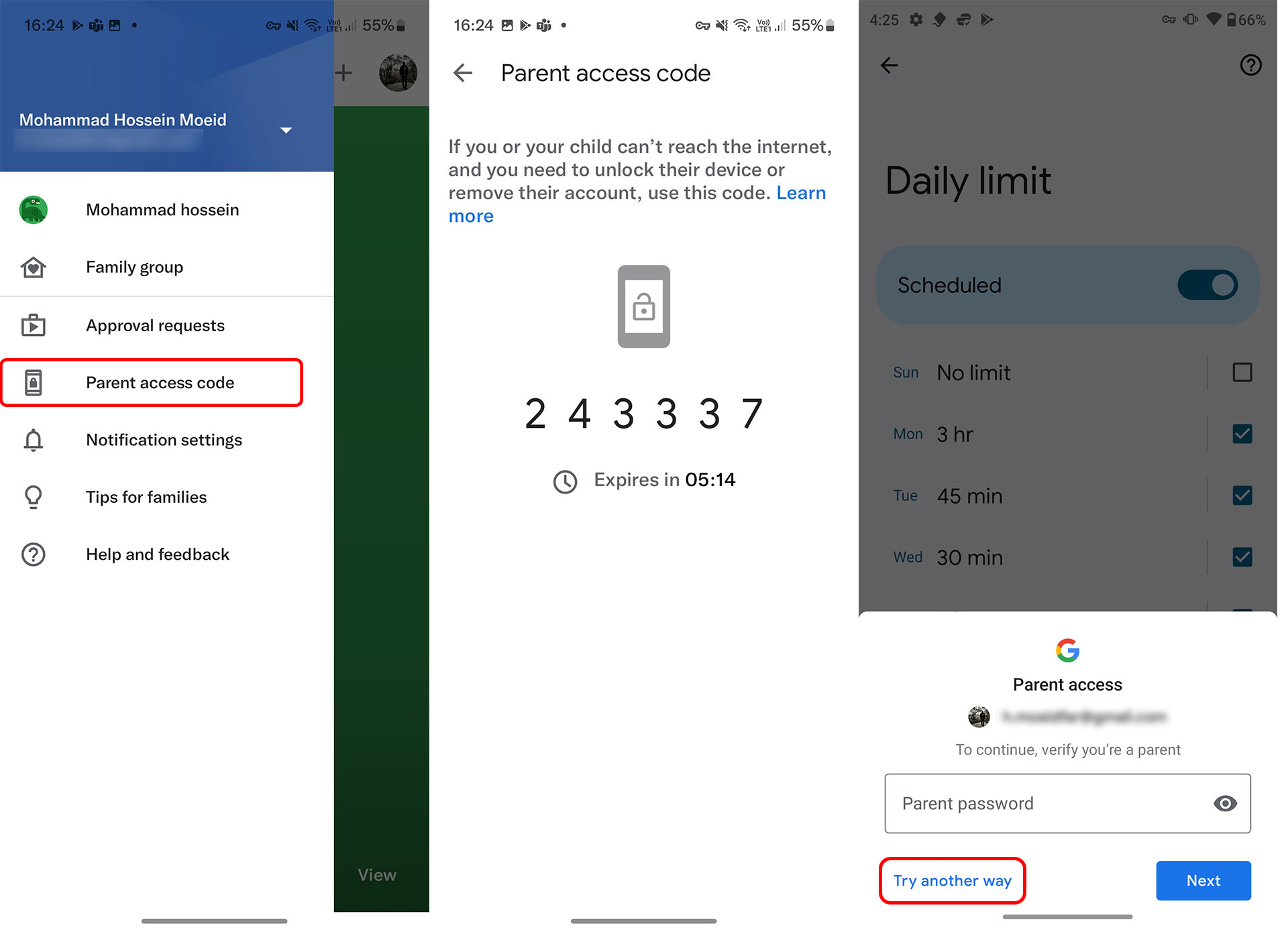
Manage notifications
Since the user’s activities and requests must be notified to the parents, it is possible to set how these notifications are done. By default, for three activities, i.e., application installation requests, site access requests, and activities performed by the user, the administrator is notified both as a notification and as an email. Since email notification may cause it to be crowded, it can be disabled.
To do this, tap on the top three lines option from the Family Link’s main screen on your phone and select Notification settings. Now, like each item, you want to personalize their notifications and determine the type of notification for each on the next page. If you don’t like to receive information, turn off App notifications and Email notifications.
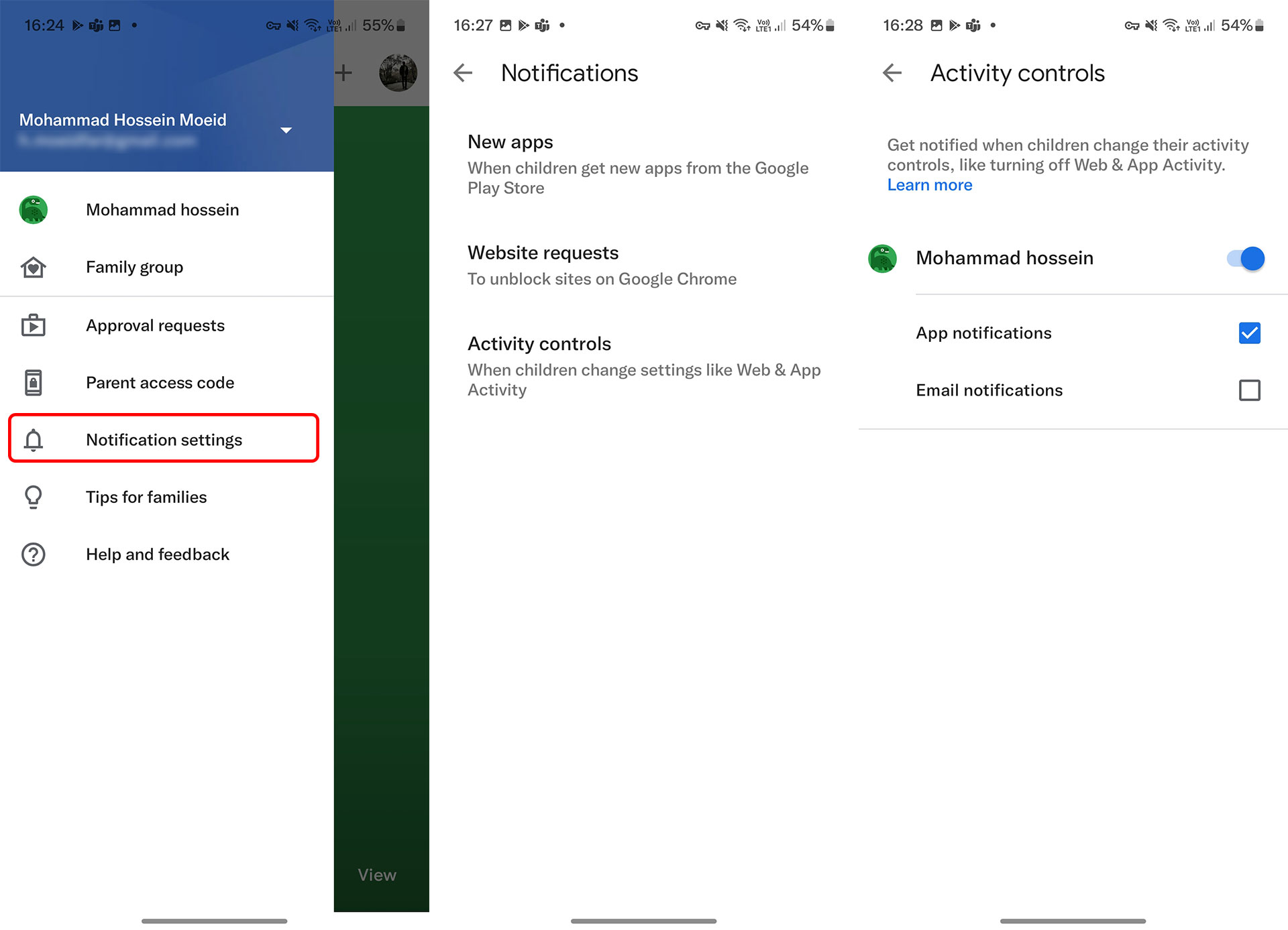
Remove the child’s account and take the device out of supervised mode.
To delete a child’s account and remove restrictions, go to settings and the Accounts & sync or Accounts & backup section, select the child’s Google account, and tap on Remove account. Next, you will be asked for the administrator’s Gmail account’s password; entering it will delete the report from the phone and remove the restrictions.
This tutorial tried to provide a complete review of Google’s parental control tool on Android phones. If you encounter any problems related to creating Gmail for children and activating Family Link, or if you have any issues or questions about its various features, share it with other users and us.
